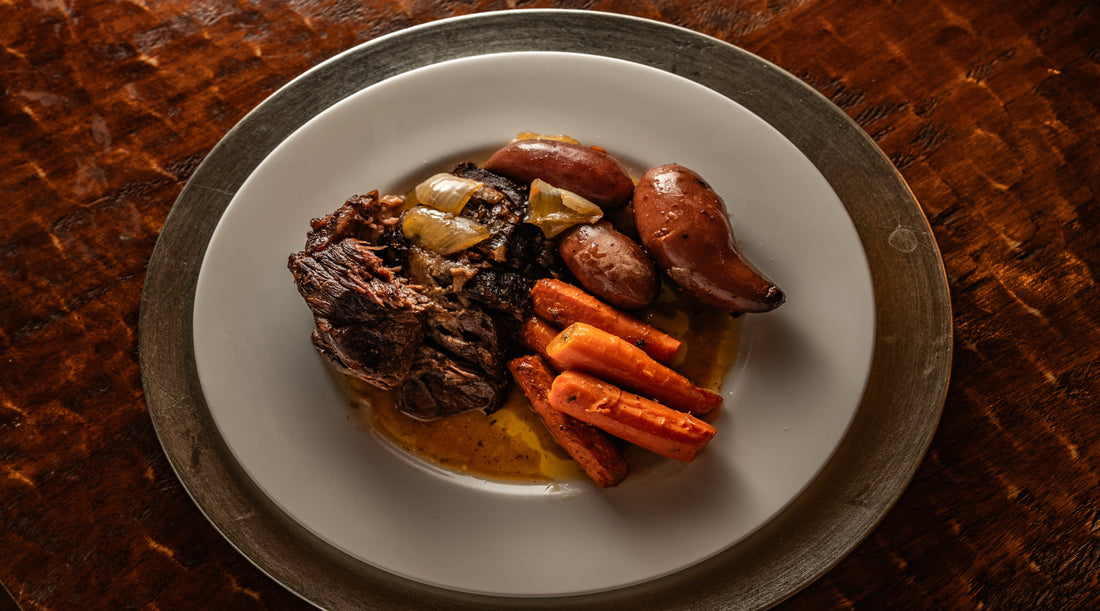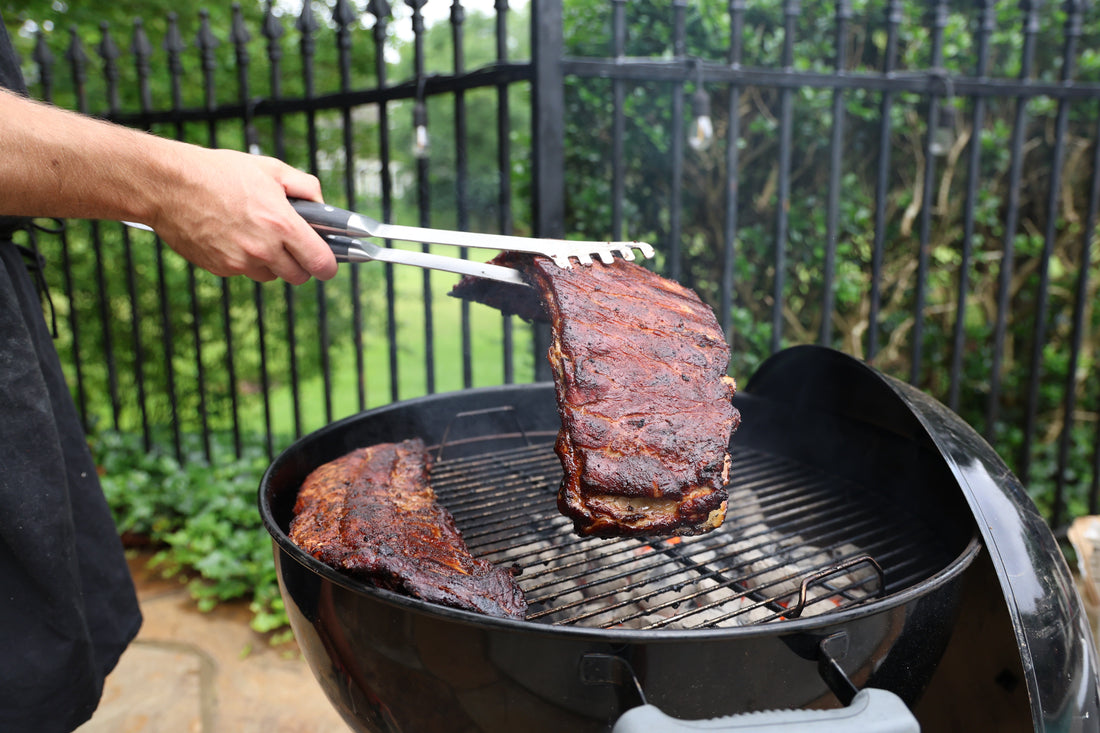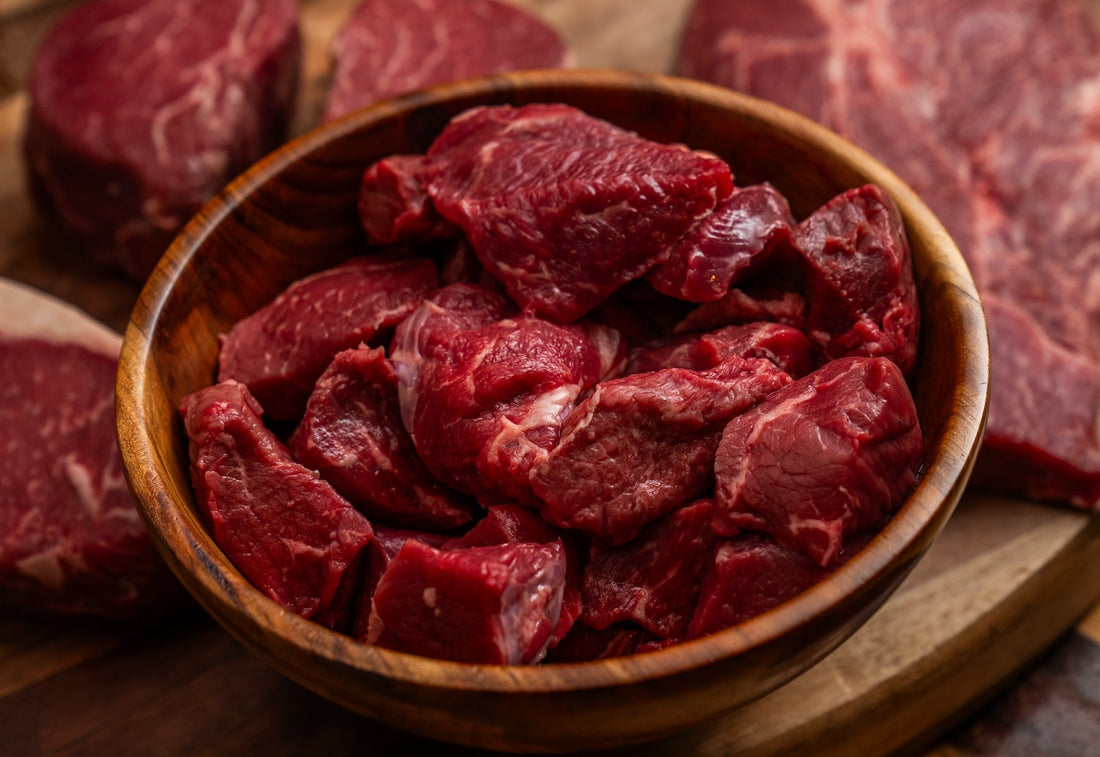When it comes to buying meat, we all want the best bang for our buck, right?
We want quality, freshness, and real value.
But here's the thing: finding top-notch meat can be trickier than you'd think. From tough steaks to not-so-fresh chicken, the meat aisle is full of surprises, and not all of them are good.
Getting your hands on truly good meat is a bigger challenge than it seems. There's a lot to think about—where it's from, how it's raised, and a bunch more.
But don't worry; this guide is your key to becoming a meat-buying pro.
We'll dive into the two main ways to buy meat—buying from your local supermarket and going directly to the farm.
You'll get clear, straightforward tips to make sure you always bring home the best meat for your family table. Let's get started!
2 Main Ways to Buy Meat: The Supermarket vs The Farm
When it's time to stock up on meat, you've got two main paths to choose from: the supermarket or straight from the farm.
Let's break down what each option brings to the table.
1. Supermarket
Pros:
- Convenience: Supermarkets are everywhere. You can grab your veggies, bread, and a new magazine all in one go.
- Variety: From chicken wings to ribeye steaks, supermarkets have it all. You're spoiled for choice!
- Pricing: Deals and discounts are the name of the game. You can often snag a bargain, especially on bulk buys.
Cons:
- Freshness Questions: Ever picked up a pack of chicken only to second-guess its freshness? Supermarkets can be a bit hit-or-miss in this department.
- Where's It From?: Tracing the journey of your supermarket meat can be tough. If knowing your meat's backstory is important to you, this might be a sticking point.
2. Farm
Pros:
- Support Local: Buying from farms means you're helping local families and businesses thrive.
- Know Your Meat: Chatting with the farmer lets you in on how the animals are raised. You’ll know the quality better, and you’ll also know if they’re ethically raised.
- Quality Potential: Direct-from-farm often means you're getting some top-notch stuff. Think flavorful, tender, and just plain delicious.
Cons:
- Price Tag: Quality comes at a price. Be prepared to spend a bit more for farm-fresh goodness.
- Convenience Factor: Unlike your neighborhood supermarket, getting meat from a farm might mean a bit of a drive. And you might not get everything you want in one trip.
So the short answer is: if you want the convenience of buying meat and don’t care about possible additives, going to the supermarket is for you.
But if you want quality, want to avoid additives in your meat, and like the idea of supporting local farms, then buying fresh meat from the farm is the way to go.
The Bigger Picture
The best meat to buy isn't just about tonight's dinner.
It's about the bigger stuff too—like keeping local farms going, knowing you're eating properly raised meat, and even doing your bit for the planet.
6 Things to Look for When Buying Meat from the Supermarket
Shopping for meat doesn't have to be a guessing game. Here are some straightforward tips to help you choose the best meat on your next supermarket trip:
1. Check for Freshness
- Color Clues: Fresh meat usually has a vibrant color. Avoid any pieces that have started to turn gray or brown.
- Date Check: Always look at the sell-by date. It's a quick way to gauge how fresh the meat is.
2. Inspect the Packaging
- Intact and Secure: The packaging should be in good shape, with no tears or holes. A well-sealed package keeps meat fresher.
- Liquid Levels: A bit of juice is expected, but too much can be a sign of a problem. Opt for packages with minimal liquid.
3. Look for Certifications
- Quality Marks: Keep an eye out for labels like "USDA Organic" or "Grass-Fed." These certifications can indicate a higher quality of meat.
- Ethical Choices: Look for "Free-Range" or similar labels if animal welfare is important to you. It often means the meat comes from animals that had better living conditions.
4. Evaluate Marbling and Texture
- Marbling: Fat marbling throughout the meat can add a lot of flavors, especially in steaks. Look for a good balance of meat and fat.
- The Right Feel: The meat should feel firm when you press it, not soft or squishy.
5. Be Mindful of Odor
- Odor: A bad meat odor usually means bad meat. If it has a funky smell, avoid it immediately.
- Watch for Bloating: You might not be able to smell the meat, but if the package looks puffed up, it could mean the meat is past its prime.
6. Choose Even Cuts
If you’re buying a cut of meat, try to choose meats that are cut evenly. That means that they will cook more evenly and will result in a better texture when you cook them.
With these tips in mind, you're all set to navigate the meat aisle like a pro, ensuring delicious and healthy meals for you and your family.
5 Things to Look for When Buying Meat from a Farm
Getting your meat straight from a farm is a fantastic way to ensure freshness and quality. Here are some important factors to consider when making your purchase:
1. Transparency and Ethics
- Chat with the Farmer: Understanding the farm's practices, from animal welfare to feeding routines, gives you insight into the quality of your meat. A good conversation can tell you a lot about how the farm operates.
- Ethical Farming: It's reassuring to know that the farm takes animal welfare and environmental sustainability seriously. These practices often lead to healthier, higher-quality meat.
2. Butchering Standards
- Inquire About Processing: The care taken in butchering and processing meat plays a huge role in its final quality. Farms with high standards in these areas are more likely to provide superior products.
- Safety and Cleanliness: Make sure the farm maintains a clean processing area, as this affects both the safety and quality of the meat.
3. Variety and Availability
- Discover What's Available: Farms might offer unique cuts that supermarkets don't. This variety can enhance your cooking and dining experience.
- Season Matters: Remember, the availability of certain meats may change with the seasons, so be open to trying different types based on what's currently available.
4. Customization Options
- Tailor to Your Needs: Some farms might let you request specific cuts or packaging, which is great for getting exactly what you need for your recipes.
- Speak Up About Preferences: If you have specific dietary needs or preferences, discussing them with the farmer can ensure you get the most suitable options.
5. Reputation and Reviews
- Research the Farm: Looking up what others have to say about the farm can give you a good idea of what to expect. Positive reviews are a good sign of quality and reliability.
- Word of Mouth: Recommendations from friends or family can also be a great guide to finding the best farm for your meat.
By keeping these tips in mind, you'll be well-equipped to select the best possible meat directly from a farm, ensuring freshness, quality, and a connection to your local food community.
Understanding Meat Labels and Certifications
When you're scanning the meat section, you'll notice a bunch of labels and certifications.
These aren't just fancy terms; they give you insights into the quality, health benefits, and ethical considerations of the meat you're buying.
Let's decode some of these labels:
Organic
Meat that's labeled "Organic" meets strict guidelines. This means the animals were raised without synthetic pesticides, fertilizers, GMOs, or routine use of antibiotics and hormones.
Grass-Fed
This label indicates that the animals were fed a natural diet of grass, which can lead to leaner meat with potentially higher levels of omega-3 fatty acids.
Free-Range
Animals with "Free-Range" labels had access to the outdoors, which supports animal welfare and can impact the quality of the meat.
Antibiotic-Free
If meat is labeled "Antibiotic-Free," it means that the animals were not given antibiotics during their lifecycle, which can be important for consumers concerned about antibiotic resistance.
The Role of Certifications
Certifications from recognized authorities, like the USDA in the United States, play a crucial role. They ensure that the meat you're buying meets certain safety and quality standards.
When you see a USDA certification, you know that the meat has passed rigorous inspections and adheres to strict regulations.
However, it's essential to navigate meat labels carefully.
Some terms sound good but might not have the regulatory backing you'd expect. For example, terms like "natural" can be misleading, as they don't have a strict definition in the context of meat labeling.
To avoid being misled, focus on labels and certifications with clear definitions and standards.
By understanding these labels and certifications, you can make more informed choices about the meat you consume.
In general, when you’re picking out meat, the more of these positive labels and certifications it has, the better meat you’re getting.
Buy Quality Meat at Simpson’s
Choosing the right meat is not just about the taste.
It's about your health, the environment, and even supporting good farming practices.
Whether you choose to buy from supermarkets or farms, one thing remains clear: you want the best bang for your buck. It ensures you get the freshest, tastiest, and most ethically sourced meat out there.
Remember, great meals start with great ingredients. And when it comes to meat, quality is key. It affects how your dishes turn out and how you feel after eating them.
Now, if you're wondering where to start your journey for top-notch meat, let me make it easy for you.
We're here to deliver just that.
As a dedicated meat farm, we take pride in offering products that are not just high in quality but also ethically and sustainably raised.
With our commitment to quality, ethical sourcing, and unmatched flavor, you're investing in a superior dining experience.
Check out our selection and take advantage of our quality deals today.





